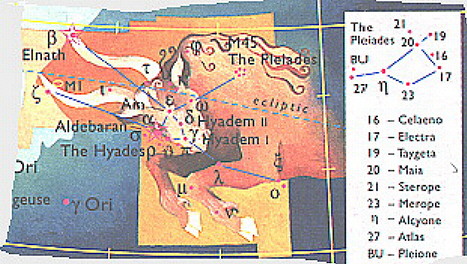|
 International Team
International Team

The XMM-Newton X-ray survey of the Taurus Molecular Cloud is an exceptionally large project to systematically investigate the high-energy properties of young stellar objects in this nearest star-forming region. It is accompanied by optical and near-infrared surveys of the same area. The total X-ray exposure time is more than 200 hours if archival exposures are added. The surveyed areas were specifically selected so as to contribute to a sample of single and binary T Tauri stars, protostars (~19 included), brown dwarfs (BD; ~13 included), and protostellar jets + Herbig-Haro objects (~36 included). For weakly absorbed stars, this survey will systematically go deeper by 1-2 orders of magnitude than previous ROSAT soft X-ray surveys of TMC (Neuhäuser et al. 1995, Stelzer & Neuhäuser 2001); for embedded protostars, it will enter uncharted territory for TMC given XMM-Newton's unprecedented high sensitivity to hard photons. A map of the TMC molecular structure together with the XMM-Newton exposures is illustrated in the following figure.
Accompanying surveys of TMC with the Canada-French-Hawaii Telescope (CFHT) obtain very deep Halpha, R, andt I band surveys from CFH12K (performed). A MEGACAM optical survey of 20 deg^2 has also been approved (PI Bouvier), and a more sensitive follow-up near-infrared (WIRCAM) survey is being planned. These surveys will for the first time characterize all stellar objects in TMC down to I = 24 mag, providing the indispensable means to identify nearly every X-ray detected object. Sensitive millimeter CO data will be added to map the molecular cloud structure.
A further large proposal (130 hours of exposure time) has been accepted for observations
with the Spitzer Space Telescope, the largest available near- to mid-infrared observatory,
covering the entire TMC region (29 deg^2) in all available mid-infrared bands. The principal purpose of
this survey is to characterize the entire TMC population, find circumstellar disks, and penetrate
dense molecular clouds to study deeply embedded protostars. A large survey of the Orion Nebula Cluster (ONC) star-forming region is also available from Chandra. The two surveys are complementary: While the ONC is a typical, high-mass star-forming region with a high volume density of stars, TMC is the prototype of isolated/non-clustered low-mass star formation where winds and UV ionizing flux from hot stars are absent.

|
|||||||||||||||
